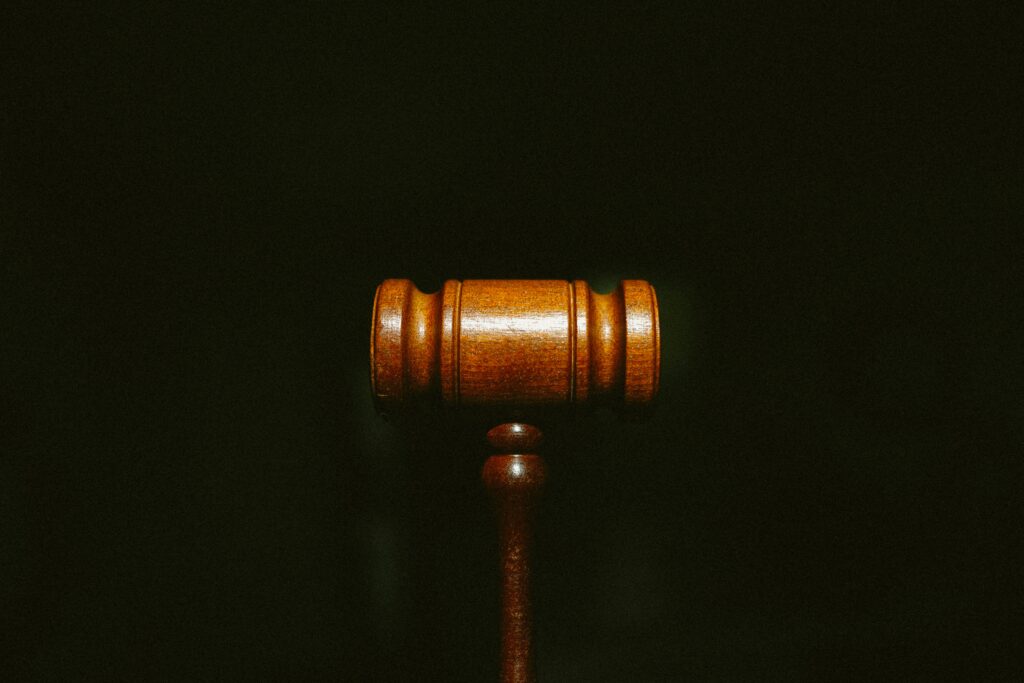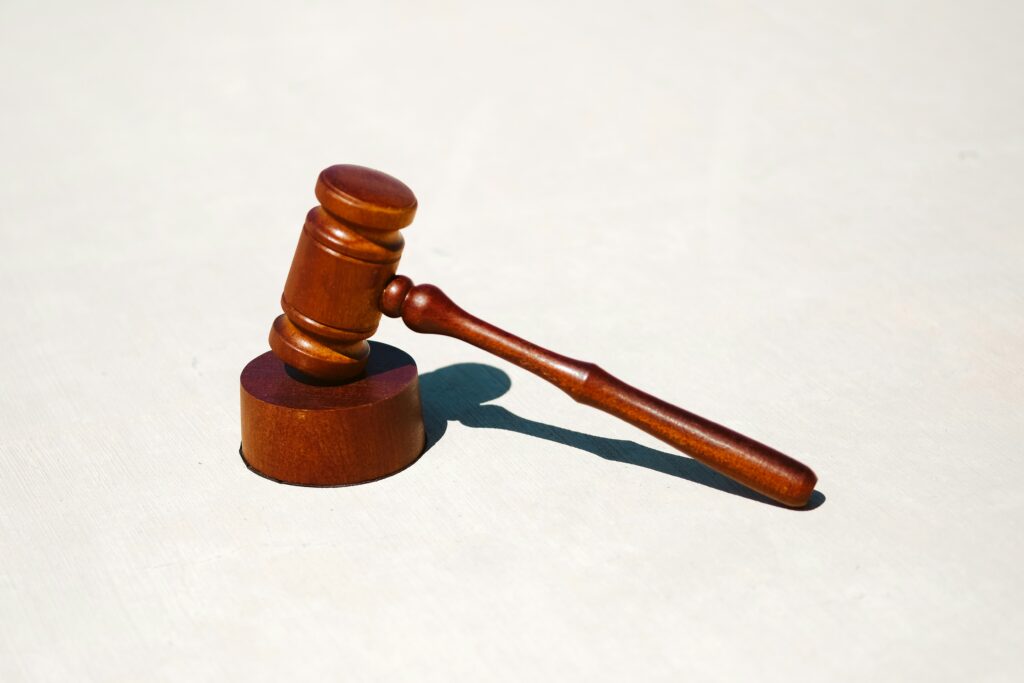Published On: August 14th 2025
Authored By: Willson Oluwademilade Oni
Ajayi Crowther University
Introduction
India’s rapid rise in internet and social media use has revolutionised social interaction, communication, and self-expression. However, people especially women, students, and teenagers are now more susceptible to the growing threat of cyberbullying as a result of technological advancements.[1] Cyberbullying is the intentional and ongoing use of online media to harass, insult, or threaten other individuals. Unlike ordinary bullying, it frequently goes unreported, transcends national borders, and can cause long-term psychological and emotional distress.[2]
According to research from the Jaipur Cyber Support Centre, over 70% of Indian students say they have been the victim of cyberbullying on social media platforms like Instagram and WhatsApp, and over one in three have been the victim of online harassment.[3] This includes sexual harassment, photo morphing, and doxxing, all of which have negative psychological repercussions, including hopelessness and fear. Although they both address different aspects of cybercrime, the Indian Penal Code 1860 and the Information Technology Act 2000 are mostly reactive and fragmented.[4]
The Supreme Court’s decision to declare Section 66A of the IT Act invalid worsened the problem by doing away with a crucial but ineffective redressal mechanism. This article argues that India’s current legal framework is insufficient to prevent cyberbullying and offers quick legislative and regulatory fixes to address this urgent issue.
Understanding Cyberbullying
In India, cyberbullying encompasses a wide range of harmful actions, including posting offensive material, stalking others online, altering one’s appearance, circulating rumours, sending threatening or abusive messages, and purposefully avoiding online communities.[5]These behaviours are made worse by the internet’s special features, which include accessibility, anonymity, and the dissemination of misleading information. As a result, victims frequently experience ongoing psychological stress, which can show up as suicidal thoughts, anxiety, hopelessness, and declining academic or professional performance.[6] A child in Gurugram’s Class XII committed suicide in 2020 as a result of being publicly humiliated and subjected to harsh internet harassment.[7]
Cyberbullying occurrences are common on well-known digital platforms such as Facebook, Instagram, WhatsApp, X (previously Twitter), and online gaming communities. Systemic flaws in digital literacy and law enforcement were revealed by the notorious 2019 “Bois Locker Room” incident, in which schoolboys exchanged sexual texts and photographs without permission.[8]
Children and adults are also impacted by cyberbullying, which disproportionately targets women, journalists, and activists. Despite a 32% increase in assaults against minors, the National Crime Records Bureau reports that the number of cybercrime cases increased by more than 24% between 2021 and 2022.[9] These figures highlight how urgently effective victim assistance, education, and legal action programs are needed.
Legal Framework for Cyberbullying in India
India does not yet have any laws that particularly address cyberbullying. Instead, the country relies on a patchwork of legislation, such as the Protection of Children from Sexual Offences (POCSO) Act of 2012, the Juvenile Justice (Care and Protection of Children) Act of 2015, the Indian Penal Code of 1860, and the Information Technology Act of 2000.[10] While addressing different forms of online abuse, none of these laws adequately define or address cyberbullying, leaving victims with a patchwork of ambiguous legal remedies.
The Information Technology Act of 2000
This Act is the primary component of Indian law that regulates cyber activities. The Supreme Court ruled in the 2015 case Shreya Singhal v. Union of India that Section 66A, which had previously penalised abusive internet communications, was unconstitutional because it restricted the right to free speech.[11] However, 66E (privacy breaches), 67 and 67A (obscene/explicit content), 66C (identity theft), 66D (impersonation), and 72 and 72A (breach of confidentiality) continue to be useful when looking at behaviours related to cyberbullying.
Indian Penal Code 1860
Examples of how the IPC alters the IT Act include sections 354D (cyberstalking), 509 (insulting a woman’s modesty), 500 (defamation), and 506/507 (criminal intimidation, including anonymous threats) of the Penal Code of India, 1860. These are frequently employed in cases of internet harassment or threats.[12]
Protection of Children from Sexual Offences (POCSO) Act 2012
This regulation ensures kid-friendly policies and harsh penalties for internet actions that target minors, including sextortion, grooming, and the distribution of child sexual abuse material (CSAM).
The Juvenile Justice Act of 2015
Through educational and therapeutic programs, this law governs young people who engage in cyberbullying, prioritising reform and rehabilitation above punishment.
Implementation Challenges
The fact that enforcement is still slack despite these prohibitions due to underreporting, jurisdictional complexity, police experience in cybercrime, and legislative fragmentation highlights the urgent need for a comprehensive cyberbullying strategy in India.
Judicial Interpretation and Landmark Cases
In interpreting cyber rules, especially those that have a dubious link to cyberbullying, the Indian court has taken a major but largely reactive role. Courts have relied on several statutory laws and constitutional rights in the lack of a single cyberbullying statute, frequently rendering decisions on an individual basis without creating a coherent body of precedent.[13]
In one of the most significant instances, Shreya Singhal v. Union of India (2015), the Supreme Court ruled that Section 66A of the Information Technology Act, 2000, was unconstitutional. The Court determined that the expression violated the basic right to freedom of speech protected by Article 19(1)(a) of the Constitution because it was excessively wide and ambiguous.[14] Despite being commended for defending civil freedoms, this ruling eliminated one of the few legal remedies available to combat some types of online harassment, leaving a significant legislative void.
The Kerala High Court upheld the necessity of internet connectivity for the Article 21 rights to education and privacy in the 2019 case of Faheema Shirin v. State of Kerala. Although this decision did not specifically address cyberbullying, it upheld the constitutional importance of internet access without outlining any safeguards against online abuse.
More recently, the Delhi High Court dealt with online impersonation utilising phoney Twitter accounts in Ritu Maheshwari v. Union of India (2021).[15] The judge emphasised the significance of social media companies supporting law enforcement and ordered swift takedowns.
Because Indian courts lack a clear framework for this type of behaviour, victims of cyberbullying are nonetheless forced to rely on varying interpretations, proof requirements, and judge and online platform verdicts notwithstanding these orders.
Challenges in Legal Enforcement
The Indian court has played a significant but largely reactive role in interpreting cyber regulations, particularly those that have a questionable connection to cyberbullying. In the absence of a single cyberbullying act, courts have relied on a number of statutory statutes and constitutional rights, sometimes making decisions on an individual basis without developing a cohesive body of precedent.[16]
The Supreme Court declared Section 66A of the Information Technology Act, 2000, to be unconstitutional in one of the most important cases, Shreya Singhal v. Union of India (2015). The Court found that because the language was too general and unclear, it infringed upon the fundamental right to freedom of speech guaranteed by Article 19(1)(a) of the Constitution. Although this decision was praised for protecting civil liberties, it left a large legislative gap by removing one of the few legal options for addressing some forms of internet abuse.[17]
In the 2019 case of Faheema Shirin v. State of Kerala, the Kerala High Court affirmed that internet access is necessary for the Article 21 rights to privacy and education. This ruling supported the constitutional significance of internet access without providing any protections against online abuse, despite the fact that it did not expressly address cyberbullying.[18]
More recently, in Ritu Maheshwari v. Union of India (2021), the Delhi High Court addressed online impersonation using phoney Twitter accounts.[19] The judge ordered quick takedowns and underlined the importance of social media corporations assisting law enforcement.
Despite these decisions, victims of cyberbullying are nevertheless forced to rely on different interpretations, evidentiary requirements, and judge and internet platform verdicts since Indian courts lack a defined framework for this type of activity.
Comparative Analysis with Other Countries
In contrast to India, which takes a disjointed and reactive strategy, other nations have created specialised legislation, law enforcement agencies, and institutional accountability frameworks to combat cyberbullying far more proactively, according to a comparative legal review.
United States
To combat cyberbullying, the US has a mixed federal-state strategy. Laws against cyberbullying have been established in a number of countries, requiring schools to set up reporting procedures and punitive actions.[20] Although it hasn’t been enacted yet, the Megan Meier Cyberbullying Prevention Act was proposed at the federal level to make online abuse illegal. Additionally, the Children’s Online Privacy Protection Act (COPPA) of 1998 regulates digital platforms to prevent online abuse by restricting the gathering of data from children under the age of thirteen.[21] In contrast to India, which focuses mostly on criminal conduct, the US places a higher priority on prevention through school-level activities.
United Kingdom
Laws such as the Malicious Communications Act of 1988 and the Communications Act of 2003, which target threats and derogatory statements, have long outlawed damaging internet communications in the United Kingdom.[22] The Online Safety Act 2023 requires digital companies to identify, monitor, and remove harmful content or risk penalties as a step towards platform accountability. This strategy encourages proactive regulation, which is not currently supported by the Indian legal system.
Australia
The eSafety Commissioner was formed by the Online Safety Act 2021, giving Australia a strong institutional foundation. This impartial body to look into complaints, remove content, and penalise sites that violate the law.[23]
It uses a coordinated, victim-centred strategy that combines technological and legal solutions. These incidents demonstrate that specific laws, strong institutions, and preventative measures are necessary for the efficient control of cyberbullying areas in which Indian law now falls short.
Recommendations and the Way Forward
India desperately requires a comprehensive reform program to successfully tackle cyberbullying given the glaring legislative and enforcement inadequacies. Adopting thorough anti-cyberbullying laws that define the term clearly, classify acts according to the victims’ ages and severity, and specify appropriate sanctions should be the first step.[24] With an emphasis on victim protection and restorative justice, such laws must distinguish between juvenile and adult criminals.
In order for victims to report abuse as soon as possible, they must also have private, round-the-clock access to a national cyberbullying hotline and online reporting system. This program, which would be a crucial frontline response tool, would be best supervised by the Ministry of Home Affairs.[25]
In order to encourage responsible online conduct and lessen the stigma associated with cyber abuse, initiatives for digital literacy and awareness must also be institutionalised in businesses, educational institutions, and schools. Digital rights education, civility seminars, and peer-led projects are crucial. By hiring professionals in digital forensics, training specialist cybercrime teams, and providing police with cutting-edge investigation equipment, law enforcement skills must be greatly enhanced.[26] Judicial workers must also receive training on how to deal with technology concerns.
A legislative framework that requires the swift collaboration of law enforcement and the removal of dangerous content must also impose a duty of care on digital platforms.[27] Finally, all educational institutions must have explicit policies against cyberbullying that include channels for anonymous reporting, disciplinary actions, and psychological support services, according to the Ministry of Education. When combined, these changes will increase the safety and accountability of India’s digital ecosystem.[28]
Conclusion
Cyberbullying is a serious danger to digital security, mental health, and constitutional rights in India. Online abuse has increased in frequency and sophistication as internet use spreads across various people and geographical locations. The Indian Penal Code and the Information Technology Act are disjointed, antiquated, and badly implemented, even if they offer few legal options.[29] Inadequate reporting procedures, institutional apathy, and delayed justice are commonplace for victims, particularly women and children.
The harm already done is made worse by a lack of a uniform legal framework and low public awareness. India urgently requires a comprehensive plan that combines strong digital platform regulation, enhanced cyber enforcement, public education campaigns, and legislation specifically designed to prevent cyberbullying. Global examples demonstrate how platform accountability and institutional empowerment may significantly lessen harm. Working together is crucial.
Bibliography
Anaisha Kakkar, ‘Cyberbullying Among Indian Teenagers: Causes, Consequences, and Countermeasures’ (HSA Tutoring, 10 July 2024) https://www.hsatutoring.in/cyberbullying-report-2024 accessed 3 July 2025.
Bois Locker Room (Wikipedia, 2025) https://en.wikipedia.org/wiki/Bois_Locker_Room accessed 3 July 2025.
C Chauhan, ‘Cybercrimes see highest spike among cognisable offences in 2022, says NCRB’ Hindustan Times (5 December 2023) https://www.hindustantimes.com accessed 3 July 2025.
Divya Yadav, ‘Cyberbullying Laws in India: Current Challenges and Reforms’ International Journal for Legal Research and Analysis (2024) https://www.ijlra.com/details/cyberbullying-laws-in-india-current-challenges-and-reforms-by-divya-yadav accessed 3 July 2025.
Divya Yadav (n 1).
Faheema Shirin v State of Kerala [2019] KHC 123.
Internet Freedom Foundation, ‘Zombie Tracker: Section 66A still invoked’ (2021).
IPC s 509; see Vidhi, ‘Cyber Bullying and Roasting in India’ (2025) https://lawfullegal.in/… accessed 3 July 2025.
IPC ss 500, 506, 507; see Cyber Bullying Legal Survival Guide, Savara Advocates (May 2025).
IT Act 2000 s 66E.
IT Act 2000 ss 67 and 67A; see also LegalKart, ‘What Is the Punishment for Cyberbullying in India?’ (2025) https://www.legalkart.com/legal-blog/what-is-the-punishment-for-cyberbullying-in-india- accessed 3 July 2025.
Jaipur Cyber Support Centre, Annual Statistics Report (Government of Rajasthan, May 2025) https://www.cyberjaipur.gov.in/reports/2025 accessed 3 July 2025.
Law Commission of India, Report on Digital Evidence and Capacity Gaps in Police (LawComm, 2023).
Lawful Legal, ‘Need for Specific Legislation’ (2025) https://lawfullegal.in/… accessed 3 July 2025.
Manav Singh (Wikipedia, 2025) https://en.wikipedia.org/wiki/Manav_Singh accessed 3 July 2025.
Mohua Das, ‘Child cyber crime surges 32% reveals NCRB data’ Times of India (26 January 2024) https://timesofindia.indiatimes.com accessed 3 July 2025.
National Crime Records Bureau (NCRB), Crime in India Report (2023) https://ncrb.gov.in/en/crime-india accessed 3 July 2025.
N Goyal, L Park and L Vasserman, ‘“You have to prove the threat is real”: Understanding the needs of Female Journalists and Activists to Document and Report Online Harassment’ (arXiv, 22 February 2022) https://arxiv.org/abs/2202.11168 accessed 3 July 2025.
Pavan Duggal, ‘Cyber Harassment, Stalking and Defamation in India’ Crime in India (Wikipedia, 2025) https://en.wikipedia.org/wiki/Crime_in_India accessed 3 July 2025.
Prithwish Ganguli, ‘Cyberbullying Legislation in India: Effectiveness and International Perspectives’ (2024) SSRN https://ssrn.com/abstract=4421983 accessed 3 July 2025.
Shreya Singhal v Union of India [2015] 12 SCC 73.
Vidhi Centre for Legal Policy, ‘Need for Standardised Cyberbullying Policy in Educational Institutions’ (2024) https://www.vidhilegalpolicy.in accessed 3 July 2025
[1] Jaipur Cyber Support Centre, Annual Statistics Report (Government of Rajasthan, May 2025) https://www.cyberjaipur.gov.in/reports/2025 accessed 3 July 2025.
[2] Anaisha Kakkar, ‘Cyberbullying Among Indian Teenagers: Causes, Consequences, and Countermeasures’ (HSA Tutoring, 10 July 2024)
[3] https://www.hsatutoring.in/cyberbullying-report-2024 accessed 3 July 2025. Shreya Singhal v Union of India [2015] 12 SCC 73.
[4] Prithwish Ganguli, ‘Cyberbullying Legislation in India: Effectiveness and International Perspectives’ (2024) SSRN https://ssrn.com/abstract=4421983 accessed 3 July 2025.
[5] P Duggal, ‘Cyber Harassment, Stalking and Defamation in India’ Crime in India (Wikipedia, 2025) https://en.wikipedia.org/wiki/Crime_in_India accessed 3 July 2025
[6] N Goyal, L Park and L Vasserman, ‘“You have to prove the threat is real”: Understanding the needs of Female Journalists and Activists to Document and Report Online Harassment’ (arXiv, 22 February 2022) https://arxiv.org/abs/2202.11168 accessed 3 July 2025
[7] Manav Singh (17), see Manav Singh (Wikipedia) (2025) https://en.wikipedia.org/wiki/Manav_Singh accessed 3 July 2025.
[8] Bois Locker Room (Wikipedia) (2025) https://en.wikipedia.org/wiki/Bois_Locker_Room accessed 3 July 2025.
[9] C Chauhan, ‘Cybercrimes see highest spike among cognisable offences in 2022, says NCRB’ Hindustan Times (5 December 2023) https://www.hindustantimes.com accessed 3 July 2025.
[10] Mohua Das, ‘Child cyber crime surges 32% reveals NCRB data’ Times of India (26 January 2024) https://timesofindia.indiatimes.com accessed 3 July 2025.
[11] Divya Yadav, ‘Cyberbullying Laws in India: Current Challenges and Reforms’ International Journal for Legal Research and Analysis, (2024) https://www.ijlra.com/details/cyberbullying-laws-in-india-current-challenges-and-reforms-by-divya-yadav accessed 3 July 2025.
[12] Shreya Singhal v Union of India [2015] 12 SCC 73.
[13] Internet Freedom Foundation, ‘Zombie Tracker: Section 66A still invoked’ (2021).
[14] IT Act 2000 s 66E.
[15] IT Act 2000 ss 67 & 67A; see also LegalKart, ‘What Is the Punishment for Cyberbullying in India?’ (2025) https://www.legalkart.com/legal-blog/what-is-the-punishment-for-cyberbullying-in-india- accessed 3 July 2025.
[16] Divya Yadav (n 1).
[17] IPC s 509; see Vidhi, ‘Cyber Bullying and Roasting in India’, (2025) https://lawfullegal.in/… accessed 3 July 2025.
[18] IPC ss 500, 506, 507; see Cyber Bullying Legal Survival Guide, Savara Advocates (May 2025).
[19] Lawful Legal, ‘Need for Specific Legislation’ (2025) https://lawfullegal.in/… accessed 3 July 2025.
[20] Ibid.
[21] Shreya Singhal v Union of India [2015] 12 SCC 73.
[22] Divya Yadav, Cyberbullying Laws in India: Current Challenges and Reforms (IJLRA, 2024) https://www.ijlra.com/details/cyberbullying-laws-in-india-current-challenges-and-reforms-by-divya-yadav accessed 3 July 2025.
[23] Faheema Shirin v State of Kerala [2019] KHC 123.
[24] Prithwish Ganguli, ‘Cyberbullying Legislation in India: Effectiveness and International Perspectives’ (2024) SSRN https://ssrn.com/abstract=4421983 accessed 3 July 2025.
[25] National Crime Records Bureau (NCRB), Crime in India Report (2023) https://ncrb.gov.in/en/crime-india accessed 3 July 2025.
[26] Mohua Das, ‘Child Cyber Crime Surges 32% Reveals NCRB Data’ Times of India (26 January 2024) https://timesofindia.indiatimes.com accessed 3 July 2025.
[27] Law Commission of India, Report on Digital Evidence and Capacity Gaps in Police (LawComm, 2023).
[28] Vidhi Centre for Legal Policy, ‘Need for Standardised Cyberbullying Policy in Educational Institutions’ (2024) https://www.vidhilegalpolicy.in accessed 3 July 2025.
[29] Prithwish Ganguli, ‘Cyberbullying Legislation in India: Effectiveness and International Perspectives’ (2024) SSRN https://ssrn.com/abstract=4421983 accessed 3 July 2025.



